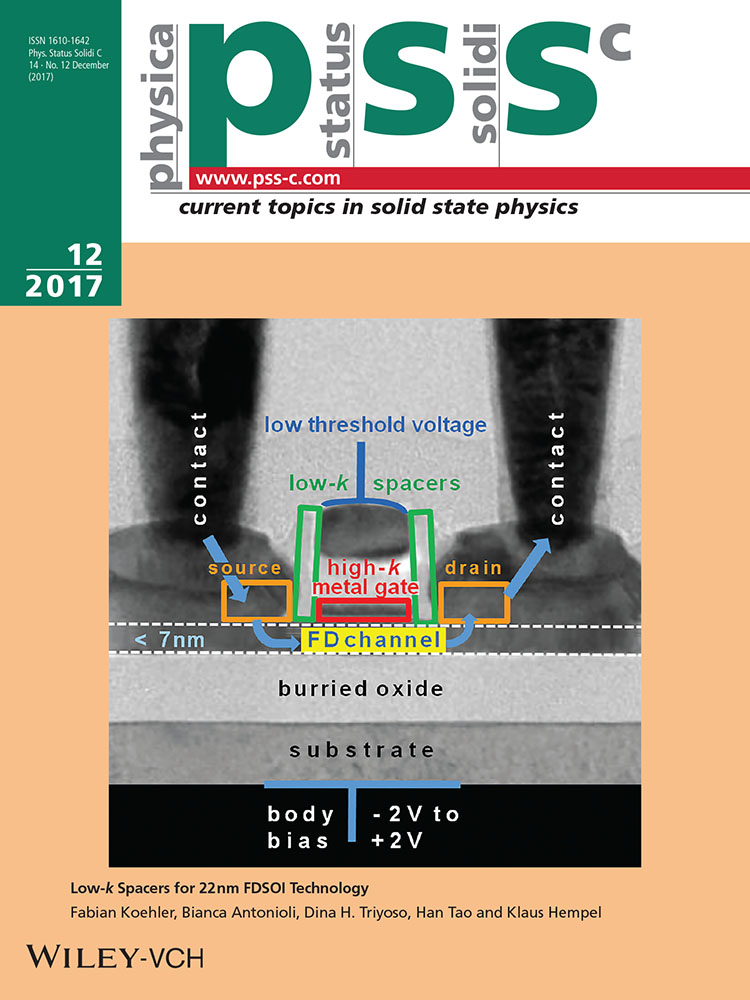Impurity levels of high quality p-doped ZnTe single crystal
Abstract
Temperature dependence of the photoluminescence (PL) spectra in the high quality ZnTe substrate (111) was clearly observed. Three distinct kinds of peaks at 4.2 K were present at 2.362, 2.329 and 2.304 eV, which could be assigned to be the radiative recombination of the exciton bound to a neutral acceptor (I1), free to a neutral acceptor (FA) and with longitudinal optical (LO) phonon replicas, respectively. The bandgap energy (Eg) was estimated to be 2.394 eV by adding the reflection peak (2.381 eV) to the exciton binding energy (12.9 meV). Therefore, the activation energy of the phosphor impurity was estimated to be 65 meV by subtracting the Eg to the peak energy of the FA emission band. Furthermore, it was clear that the PL emission was observed at 2.26 eV up to room temperature. This value was good agreement with the Eg at room temperature.




